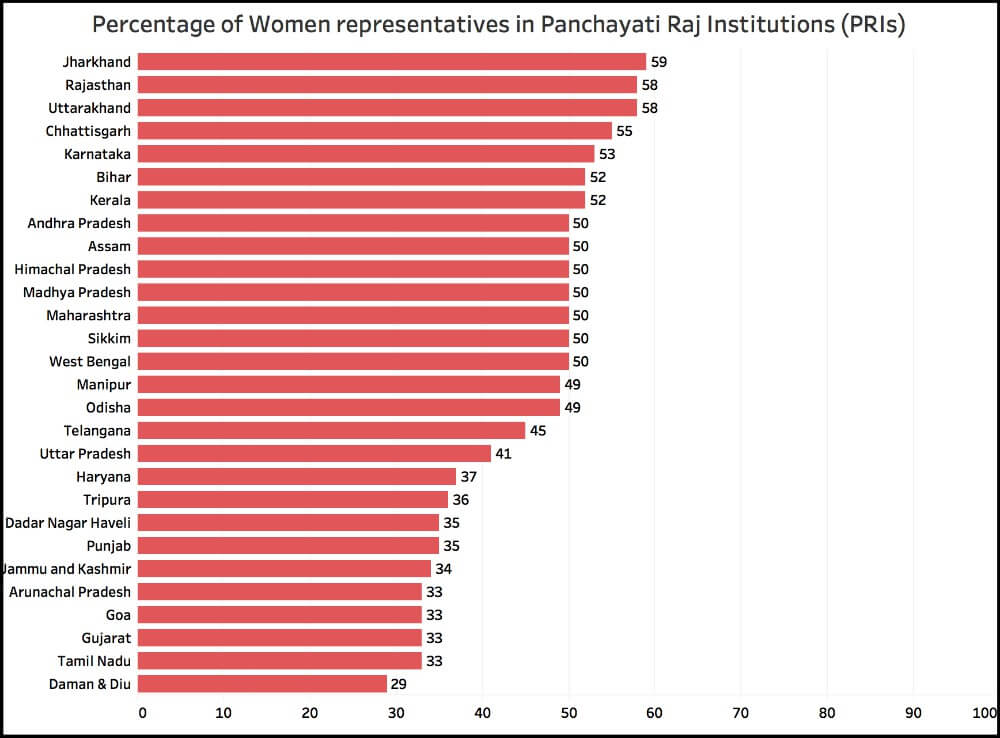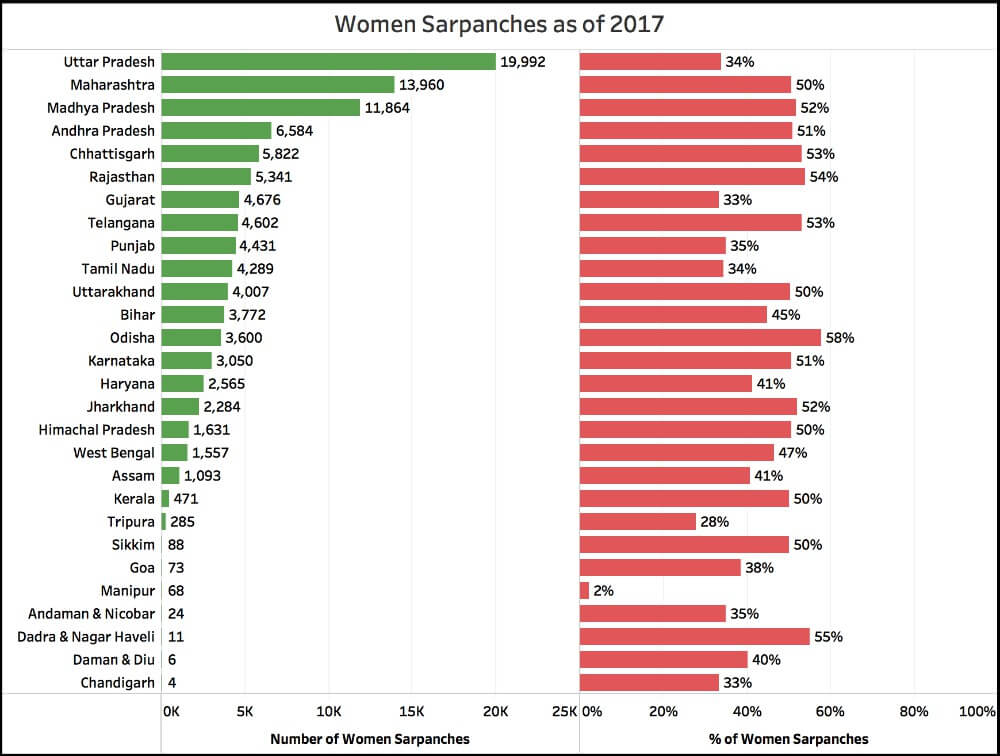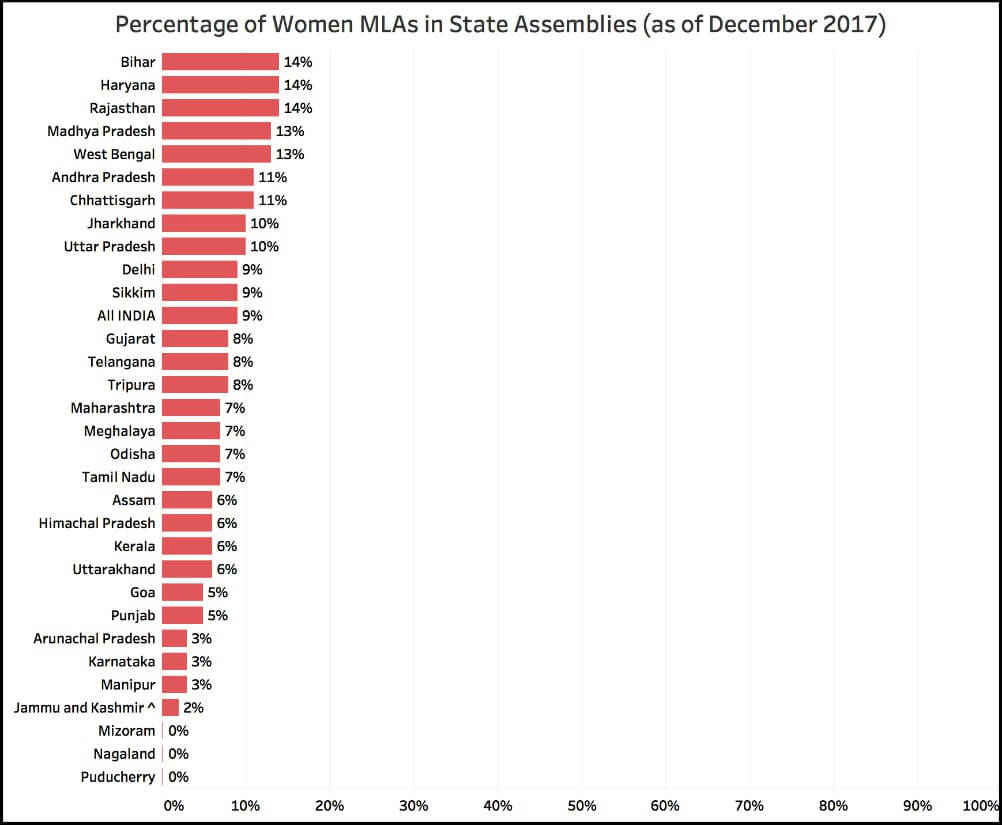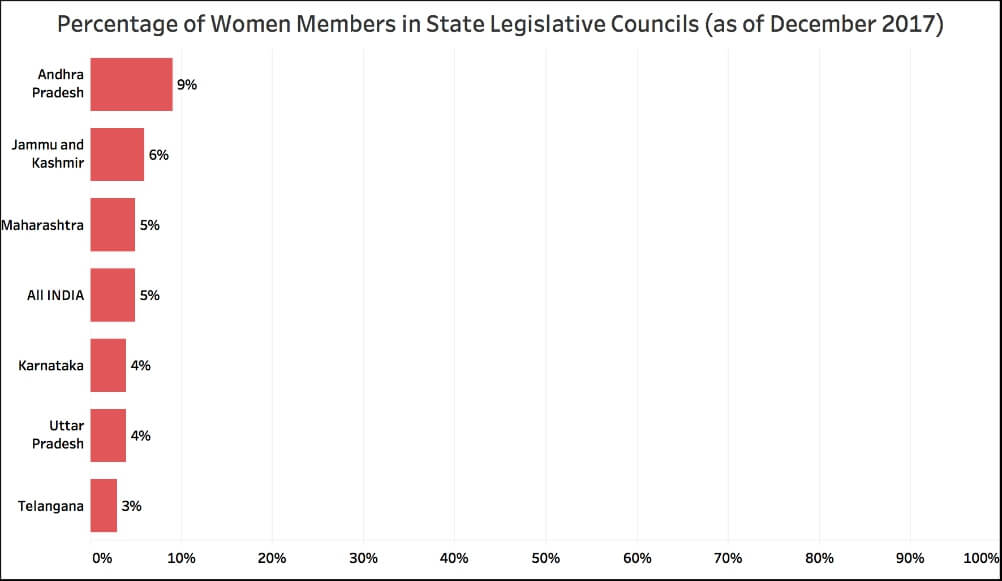[orc]While representation of women in Panchayati Raj institutions has improved with the 73rd amendment, their representation in State Legislature remains low. As is noted in various studies, representation is only the first step to ensure equal participation in decision making.
In 1992, when the 73rd and 74th Constitutional Amendments introduced local self-governance, it was an unparalleled step to consciously empower women as decision makers with 1/3rd of the seats reserved for women. Today, 14 states have 50%-58% representation of women in Panchayat Raj Institutions. Jharkhand leads the way with 58%, closely followed by Rajasthan and Uttarakhand.
Uttar Pradesh has the highest number of women sarpanches at 19,992 but only 34% of total sarpanches. The state of Odisha has 3600 woman sarpanches, an above average 58% of the total number. Manipur has the least percentage of women sarpanches with just 2% representation.

Women in State Legislatures
According to the Government of India statistics, for elections held during 2013 to 2017 for various State Legislative Assemblies, percentage of women representation is only as high as 14% (in Bihar, Haryana & Rajasthan). On an average at all India level, as of 2017, 9% of the State Assembly members and 5% of the State Council members were women. In Mizoram, Nagaland and Puducherry have zero women MLAs.

Andhra Pradesh has the highest percentage of women members in the State Legislative Council at 9%, 4% higher than the all India average of 5%.

Legislation is only a first step
Even though India has managed to legislate representation, it is only the first step in a long way ahead for women to be on par with men as decision makers. Representation alone is inadequate and until it is manifested as participation, it remains limited in its capacity to empower women in the public sphere.
According to a study by the International Center for Research on Women, effective participation frequently gets subdued due to institutional and social barriers in the case of women. Capacity building to enable women in proactive participation will need institutional reform as well as dismantling existing power structures such as oppressive patriarchy, physical and emotional violence against women at home and in the public spheres. The study findings also reaffirm that women elected representatives face varied gender specific constraints. As more and more women aspire to take their rightful place within governance bodies, it is important for all institutions (state, family and community) to respond to women’s specific needs such as bridging gaps in education, renegotiating gender roles, the gender division of labour and addressing biased attitudes. This, coupled with a discourse to engender institutional and operational frameworks to place strategic gender interests at the core of the governance processes will go a long way in exploiting the potential of panchayats as spaces of democracy and equitable development.
This is Part 2 of a special series on ‘Women in Decision Making roles’. Read
Part 1: Missing Gender Diversity in the Indian Judiciary
Part 3: Women Ministers: Breaking the Glass Ceiling
Featured Image: Women in Panchayat Raj Institutions & State Assemblies



1 Comment
LIBERATED FROM DEBT, NOW PROPERTIES OWNER WITH THE HELP OF PROSPER LOAN: prosperloanfirm@yahoo.com
////